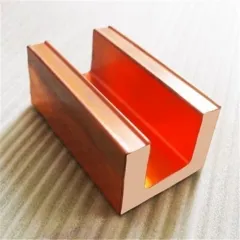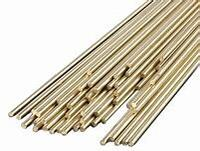1. Introduction
Let’s face it: if you’ve ever stared at a tangled heap of insulated copper wire wondering how on earth you’ll get to the shiny metal inside without setting your garage on fire or giving yourself carpal tunnel syndrome—you’re not alone. Stripping copper wire is a rite of passage for DIYers, electricians, recyclers, and even weekend warriors looking to cash in on scrap prices. But before you reach for the lighter (yes, some people still burn copper wire for scrap—please don’t), let’s talk about smarter, safer, and more profitable ways to do it right.

This guide covers everything from choosing the right tools to identifying valuable copper types like rod copper, copper strip, and copper round bar—plus what to avoid when stripping wire for recycling. No fluff, no jargon, just practical steps that save time, money, and possibly your eyebrows.
2. Why Proper Copper Wire Stripping Matters
Not all copper is created equal. You’ve got bare #6 copper wire for grounding, flexible copper bus bar scraps, copper strip wire from transformers, and even copper earth strip 25x3mm used in earthing systems. Each type has different insulation, thickness, and market value. Burning copper wire for scrap might seem fast, but it releases toxic fumes, damages the copper, and slashes its resale price. Plus, many scrap yards reject burned wire outright.
On the flip side, cleanly stripped copper—whether it’s from aircon copper pipe offcuts, copper tubing, or old motor windings—fetches top dollar. And if you’re working with copper rod for welding or copper brazing rod remnants, keeping them clean and intact preserves their utility and value.
3. Tools You’ll Actually Need

- Manual wire strippers (for small-gauge wires)
- Automatic wire stripping machines (ideal for long runs or bulk scrap)
- Utility knives (use with extreme caution!)
- Heat guns (not open flames!) for stubborn insulation
- Safety gloves and goggles (non-negotiable)
Skip the pliers-and-teeth method—it’s 2024, not 1974. Invest in a decent automatic stripper if you process more than a few pounds a week. They pay for themselves fast, especially when you’re handling stripping wire for scrap regularly.
4. Step-by-Step: Best Way to Strip Copper Wire
4.1. Sort Your Wire First
Separate types: THHN, Romex, coaxial, motor magnet wire, etc. Thin copper strips from electronics need gentler handling than 15mm copper tube leftovers. Also, identify any copper alloy strip (like beryllium copper strip or nickel plated copper strip)—these may have specialty value beyond standard scrap.

4.2. Choose Your Method Based on Volume
For small jobs (<10 lbs): Use manual strippers. Adjust the gauge setting to avoid nicking the copper. For flat or ribbon-style wires (think copper strip roll or copper edging strip), carefully slice along one edge and peel.
For large volumes: Rent or buy an automatic wire stripper. These can process hundreds of feet per hour and handle everything from 1mm copper strip to thick copper cable. Bonus: they preserve conductor integrity, maximizing your copper rod price equivalent at the yard.
4.3. Avoid Common Mistakes
Never use open flames—burning copper wire for scrap ruins conductivity and contaminates the metal. Also, don’t confuse copper clad steel ground rod scraps with pure copper; the former contains steel and must be separated. Similarly, copper bonded earthing rod pieces aren’t pure copper—they’re copper bonded steel and fetch lower rates.
4.4. Clean and Bundle for Maximum Value
After stripping, wipe off grease or residue (especially from air conditioner copper pipe or copper pipework). Bundle by type: bare bright, #1 copper, #2 copper, etc. Clean, sorted copper strip near me buyers will pay noticeably more. If you’ve got copper strip price quotes in mind, presentation matters!
5. What About Other Copper Forms?
While this guide focuses on wire, remember that related items like copper round bar, copper flat bar, or even copper ingot scraps shouldn’t be stripped—they’re already bare metal. However, if you’re salvaging from HVAC systems, you might encounter ac copper pipe price fluctuations based on cleanliness. Same goes for copper pipe fittings or copper tubing fittings—remove plastic or rubber parts before selling.
And no, you can’t turn your leftover copper welding rod or copper to copper welding rod into scrap wire—but keep them organized. Specialty rods like copper brazing rod or welding rod copper often retain high resale value among welders and fabricators.
6. Conclusion
Stripping copper wire doesn’t require heroics—just the right tools, a bit of patience, and zero open flames. Whether you’re prepping copper strip for earthing, salvaging copper lines from old AC units, or cleaning up after a rewiring project, doing it properly boosts safety, legality, and profit. So skip the drama, ditch the torch, and strip like a pro. Your wallet—and your local scrap yard—will thank you.
Our Website founded on October 17, 2012, is a high-tech enterprise committed to the research and development, production, processing, sales and technical services of ceramic relative materials such as How. Our products includes but not limited to Boron Carbide Ceramic Products, Boron Nitride Ceramic Products, Silicon Carbide Ceramic Products, Silicon Nitride Ceramic Products, Zirconium Dioxide Ceramic Products, etc. If you are interested, please feel free to contact us.

